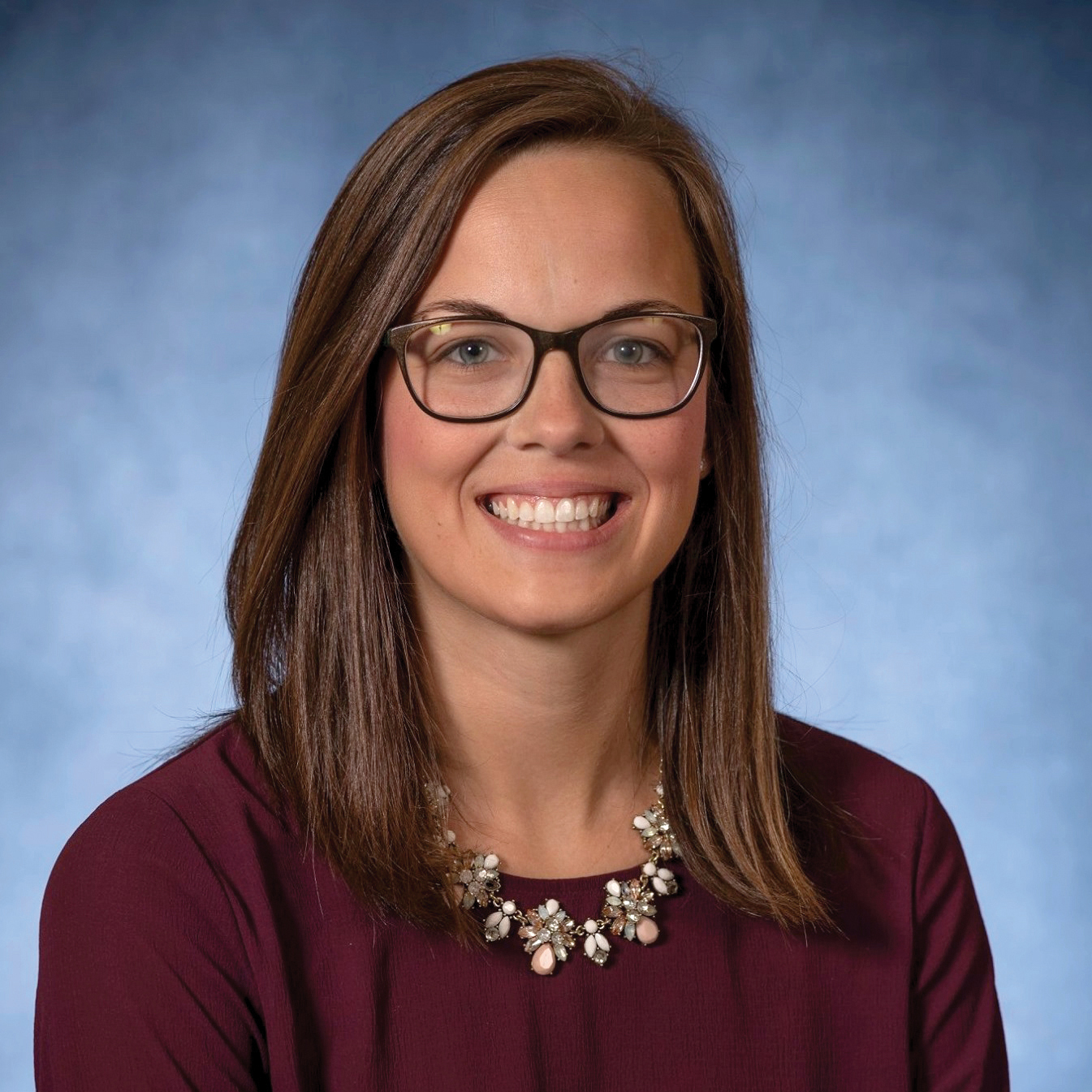BSHS Alumni Profile: Katie Nelson
Authored By: wells438 12/16/2022Katie Nelson '15 didn't plan to attend The University of Minnesota Rochester,
Rochester,
but after a bumpy freshman year at a different university, she returned home to Rochester to be closer to her support system. She knew she wanted to work in health care, so attending UMR was not only convenient, but because of the courses offered at UMR, it also made sense.
She kept her career options open; however, the decision became clear when, in her junior year, she became the primary caregiver for her grandmother and grandfather. Katie spent a lot of time by her grandma’s bedside in the intensive care unit, and witnessing the nurses care so skillfully for her favorite person reinforced that nursing was the right route to take.
“My grandmother was a nurse,” Katie says, “but she never pressured me into following in her footsteps. When I saw her nurses taking such good care of her, I knew it was the right path for me.”
In one of the last conversations Katie had with her grandmother, Katie shared that she had decided to pursue a career in nursing. Her grandmother told her that she’d always known Katie would end up becoming a nurse, but that she’d wanted Katie to figure things out for herself.
Coming into UMR as a transfer student, Katie didn’t know what to expect, but, unfortunately, the transfer didn’t go smoothly. Katie credits former Student Success Coach Perry Telander, MS as the pivotal person championing her towards graduation.
“When things started falling apart, when my grandparents got sick, I wasn’t sure if I would be able to stay on track and graduate,” Katie says. “Perry helped me figure out a plan, and he saw me through to the finish line.”
Not surprisingly, Katie now encourages transfer students to seek out the mentorship of a trusted UMR faculty or staff member – early and often.
“Find your support person, whether they are faculty or staff, as you’re trying to get your feet under you and navigate a new school,” Katie says.
Katie is now a nurse at Johns Hopkins Health System and a PhD Candidate at the Johns Hopkins School of Nursing in Baltimore, Maryland. While she had stepped away from the bedside for a bit to focus on her studies, Katie returned to work when the COVID-19 pandemic hit; she understood there was a great need for experienced nurses, so she stepped up to help. In order to keep somewhat of a work-life balance, Katie works in the float pool, picking up shifts in various areas as her schedule allows.
Katie’s dissertation research is based in Fort Belknap, Montana, where she works collaboratively with the A’aniiih (Gros Ventre) and Nakoda (Assiniboine) Peoples. Located approximately 40 miles south of the Canadian border, the Fort Belknap Indian Community relies heavily on their one Indian Health Service unit and tribal public health nurses to provide comprehensive health care to a population of over 8,000 people.
“We are conducting a community-wide needs assessment to determine what types of barriers family caregivers face in Fort Belknap when caring for a loved one with a serious, life-limiting illness,” says Katie. “We’re also asking them what additional types of support they could benefit from, so that the public health nurses can tailor the services and education they provide to ideally help keep people at home on the reservation at the end of life.”
In the course of developing her relationships with the public health nurses, Katie learned how distressed they feel when doing home visits for people with serious illnesses.
“I saw the same thing mirrored during my time working as a nurse at Mayo Clinic in Rochester,” Katie says. “We had Native Americans come from tribes all over the Midwest region. They had poor pain management, and often, [even while] imminently dying, they would travel off their land for help at Mayo Clinic. However, working in a Western-oriented setting, our protocols and procedures clashed with what they needed to support their traditional, Indigenous ways of life.”
Practices like smudging – the sacred smoke created from burning medicinal or sacred plants and washing it over bodies – was not allowed (at the time) because of building codes or a lack of ventilation in buildings.
“These were some of the most distressing experiences of their lives,” says Katie, “and not being able to participate in their traditional, cultural rituals perpetuated this complicated grief and trauma that is so prevalent among many Native American communities.”
Katie hopes her dissertation work will help develop infrastructure across Indian Country so that people can be on their land, surrounded by loved ones, when their time comes to cross over. “We know that most people want to die at home, and that is no different in Indian Country. They should not have to travel hundreds of miles for care, which is often stressful, traumatic and generally chaotic for family and loved ones.”
She plans to complete her final dissertation defense in March 2023.
Katie didn’t always want to work in the health care field. In fact, she wanted to be a mail carrier when she was growing up. However, she is glad that UMR was part of the journey that has led to her current work.
“Being a nurse is absolutely bonkers – no one day is ever the same, which I love. It’s been hard as the field has become more political in recent years due to the COVID-19 pandemic. However, working in this field, and with folks experiencing serious illness, has opened my eyes to many things, one of them being how finite our time on earth is,” says Katie, “and I try to live each day with that mentality in mind.”
Read more stories from the Fall 2022 Alumni Magazine: The Kettle.